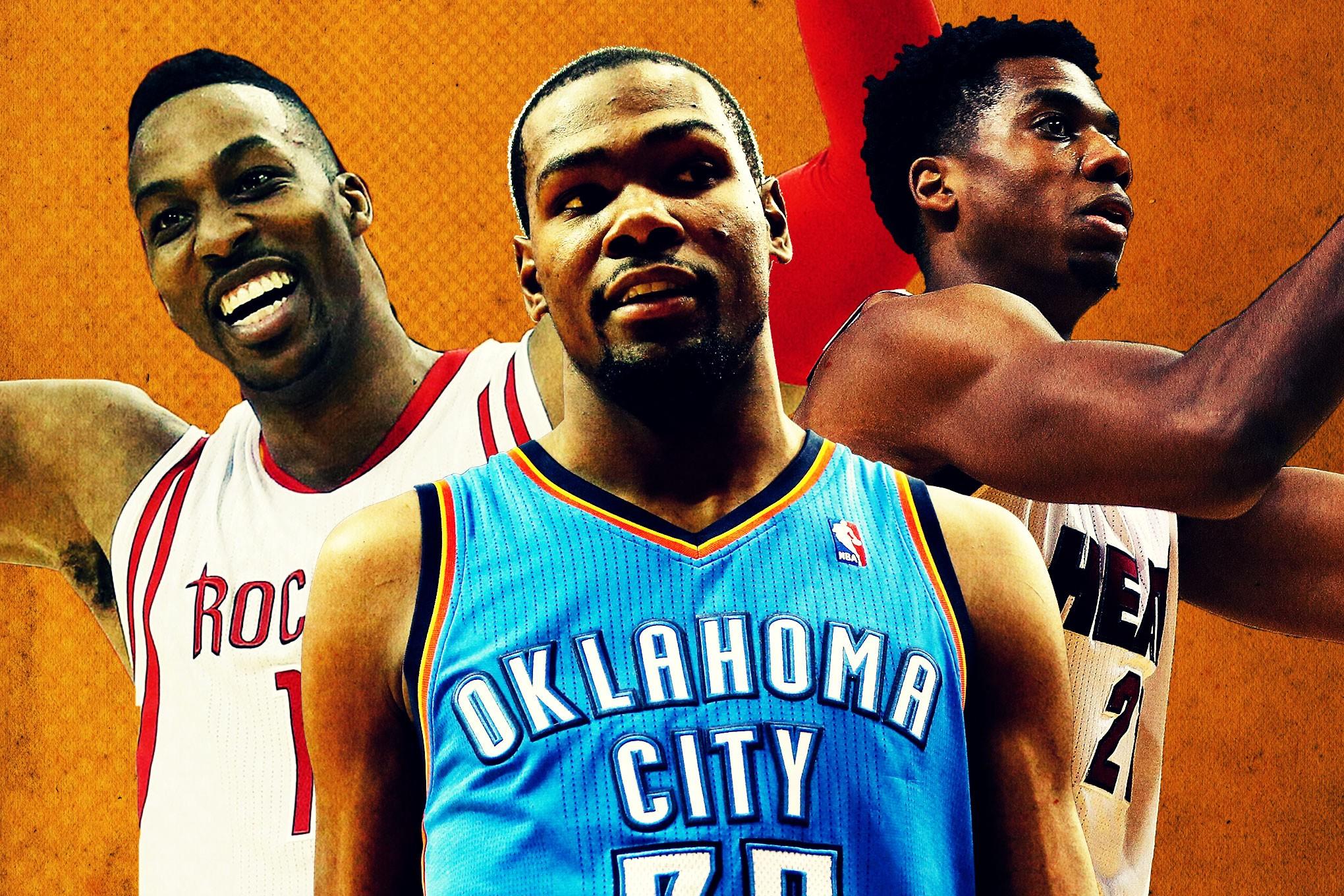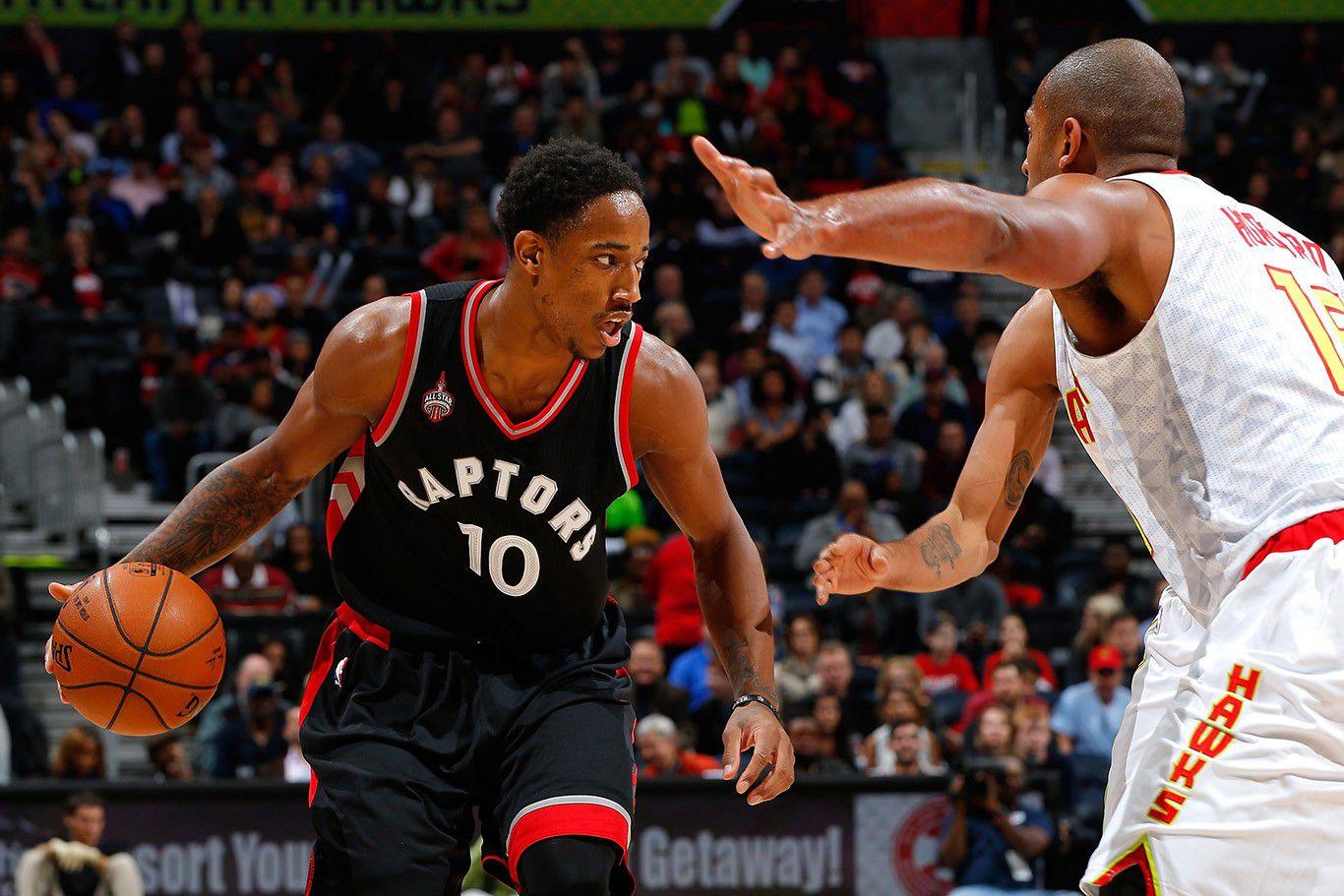
Christmas comes in July for agents around the NBA, as the start of this year’s free-agency period means massive sums of money will be thrown around the league thanks to an unprecedented amount of TV money coming into the sport. Trickle-down economics may not work in the real world, but they definitely work in the world of professional sports, where a rising tide is going to lift a lot of boats over the next two weeks. Teams have planned for this bonanza for years, but there’s no way to accurately predict the ripple effect to come once the top free agents are off the board. But how much will the association’s balance of power change, and how much of this will just be a very expensive re-shuffling of the status quo? Here are five story lines to watch as the free-agency period commences on Friday.
1. What’s going to happen with Kevin Durant?
The Kevin Durant Sweepstakes have been going on for so long that the Wizards went from serious contender to completely out of the picture before he even started taking meetings. There’s been an invisible primary going on for years, as teams have jockeyed to bid for the services of the most coveted free agent to hit the market since LeBron James. The Wizards’ pursuit of their native son began as soon as they drafted John Wall and Bradley Beal to be part of the franchise’s foundation, while the Warriors were planning on making a run at Durant before they even won the championship in 2015. All the while, the Thunder seemingly have risen and fallen in favor as the wind blows. The past few years haven’t made it easy to predict Durant’s future.
Most of the latest chatter seems to point to him staying in Oklahoma City, even with the team’s decision to trade Serge Ibaka on draft night. The Thunder still have a great base of young talent and they still have Russell Westbrook, so there aren’t many situations around the league that give him a better chance of winning right away. The Warriors and the Spurs are the only teams that can legitimately make that case, and if Durant decides to join one of his two main competitors out West, the backlash could be bigger than the aftermath of LeBron’s South Beach decision, if that’s even possible to imagine.
Durant will most likely sign a one-and-one contract with the Thunder, with a player option on the second year, which would allow him to hit free agency in 2017, when the cap is projected to rise once again. However, he’s never been a player to court the spotlight and he is only a year removed from breaking his foot, the type of injury that can instantly derail the career of a player his size. Everything else is on pause until he makes a decision, as none of the six teams he’s taking a meeting with — the Thunder, the Warriors, the Celtics, the Heat, the Spurs, and the Clippers — can afford to pass on even the slightest chance of adding a player who can change the trajectory of their franchise.
2. How strong is the lure of a five-year max contract?

Once Durant is off the board, the top remaining unrestricted free agents — Al Horford, Nicolas Batum, Mike Conley Jr., DeMar DeRozan — should follow quickly behind him. All four have proven themselves at the highest levels of the game, and they all have the rare luxury of being almost completely in control of where they want to play next season. They don’t have to wait on teams. Teams have to wait on them. The biggest carrot incumbent teams have in retaining the services of their star player is being able to offer a fifth year on a max contract, which could be worth north of $30 million.
But is that enough incentive for stars not to look around, especially given how much money they can make over four years with other teams? All four of the second-tier free agents will be on playoff teams if they stay, but there’s no guarantee the Hawks (Horford), the Hornets (Batum), the Grizzlies (Conley), or the Raptors (DeRozan) will ever contend for a title with their current core in place. Will any of them be willing to take less money to chase a championship? Will any of their teams decide against offering the maximum to their players, in the hopes of creating more flexibility for the future?
The reality is few free agents signed to long-term deals in their late 20s will be able to live up to those contracts. Marc Gasol, Conley’s running mate in Memphis, went from being the most coveted center on the market to a possible albatross with four years remaining on his contract after breaking his foot last season. The risk of injury alone could be enough to convince players to take as much money as they can. Once you lock in the money, you can always be traded to a contender later anyway. For the most part, players chasing a ring tend to be those in their mid-30s, like Richard Jefferson and David West, who no longer have the option of getting huge money in free agency.
3. The supply is there for free-agent centers, but will there be a demand?
The value of the traditional big man has never been lower around the league, which could be a problem for the wave of centers hitting the market this offseason. With Hassan Whiteside and Dwight Howard at the top, Joakim Noah and Pau Gasol in the middle, and reclamation projects like Timofey Mozgov at the bottom, there may be more starting-caliber 5s available than there are starting roles for them to fill. That doesn’t even include vets, like Al Jefferson, who have already started to transition to bench roles.
There is a question teams have to ask themselves before forking over big money to any of these centers: Can he stay on the floor the deeper we go into the playoffs? The starting centers of the two teams in Game 7 of the Finals checked in at 6-foot-7 (Draymond Green) and 6-foot-9 (Tristan Thompson), and both are far better defending on the perimeter than any of the behemoths on the market this offseason. There will always be a place for 7-footers in the NBA, but the best teams in the league may no longer be willing to devote huge chunks of their salary cap to them.
4. How will the cap boom impact restricted free agency?
Free agents coming off of their rookie contracts are some of the least mobile in the NBA, and it’s unclear how much that dynamic will change with the exploding salary cap. Inquisitive teams should be more willing to extend offer sheets to restricted free agents, since their offer won’t handicap their cap space as they wait for the original team to make a decision. Incumbent teams, on the other hand, should be less willing to give up a young asset for nothing when they will be able to fit their contracts under the cap without much of a sweat.
The one exception to that rule will be the Warriors, who may have to make tough decisions on Harrison Barnes and Festus Ezeli while they wait for Durant to make up his mind. Players like Andre Drummond and Bradley Beal won’t be going anywhere, but don’t be surprised if relatively unproven young players like Evan Fournier and Allen Crabbe sign huge offer sheets with new teams that raise eyebrows around the league. There’s never been a better time to be a young wing with two-way potential in the NBA, and anyone even remotely fitting that description is going to be entering a new tax bracket.
5. Mo’ money, mo’ problems?
Not even the most penny-pinching fan or front-office executive will begrudge stars like Durant, Horford, and Conley for getting paid. What people will have a harder time stomaching is the types of contracts that high-level role players like Kent Bazemore, Marvin Williams, Ryan Anderson, and Bismack Biyombo will be in line for. If you want to sign a quality veteran in this market, you had better be willing to bust out the checkbook. There won’t be many signings made this summer that will come cheap.
That shouldn’t be an issue when you consider the TV contract boon all teams will be reaping, but that also doesn’t count the potential issues in the locker room when guys who signed before the rising cap have to watch less talented teammates make substantially more than them — John Wall famously noted his disgust last summer after Reggie Jackson signed a five-year, $80 million contract with the Pistons, the same figures that Wall had signed for with the Wizards in a less prosperous 2013. Looming over everything is a possible lockout next season, which could dramatically change the salary structure around the league, as well as the potential collapse of the cable TV bubble, with more and more of the viewing public cutting the cord and choosing online streaming services at a substantially reduced price. Contracts that look good in 2016 might seem ridiculous by 2019. There’s no way to predict the future, and that’s what makes signing professional athletes to huge long-term contracts an inherently risky proposition. Perhaps now more so than ever before.

